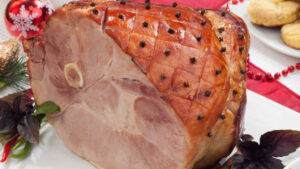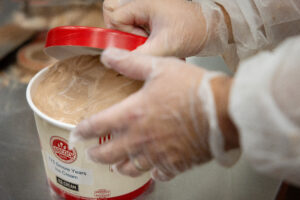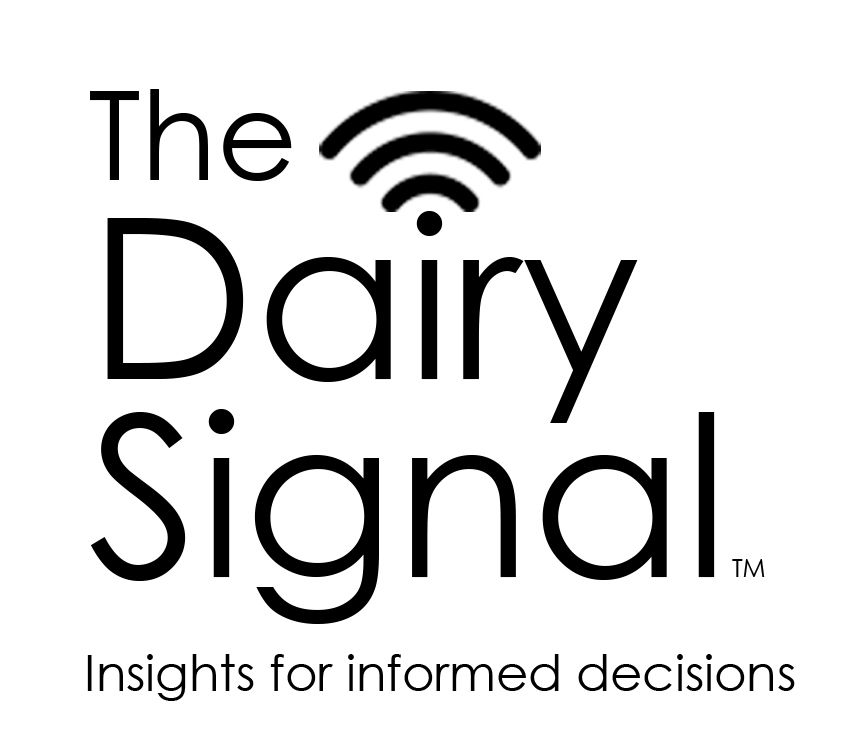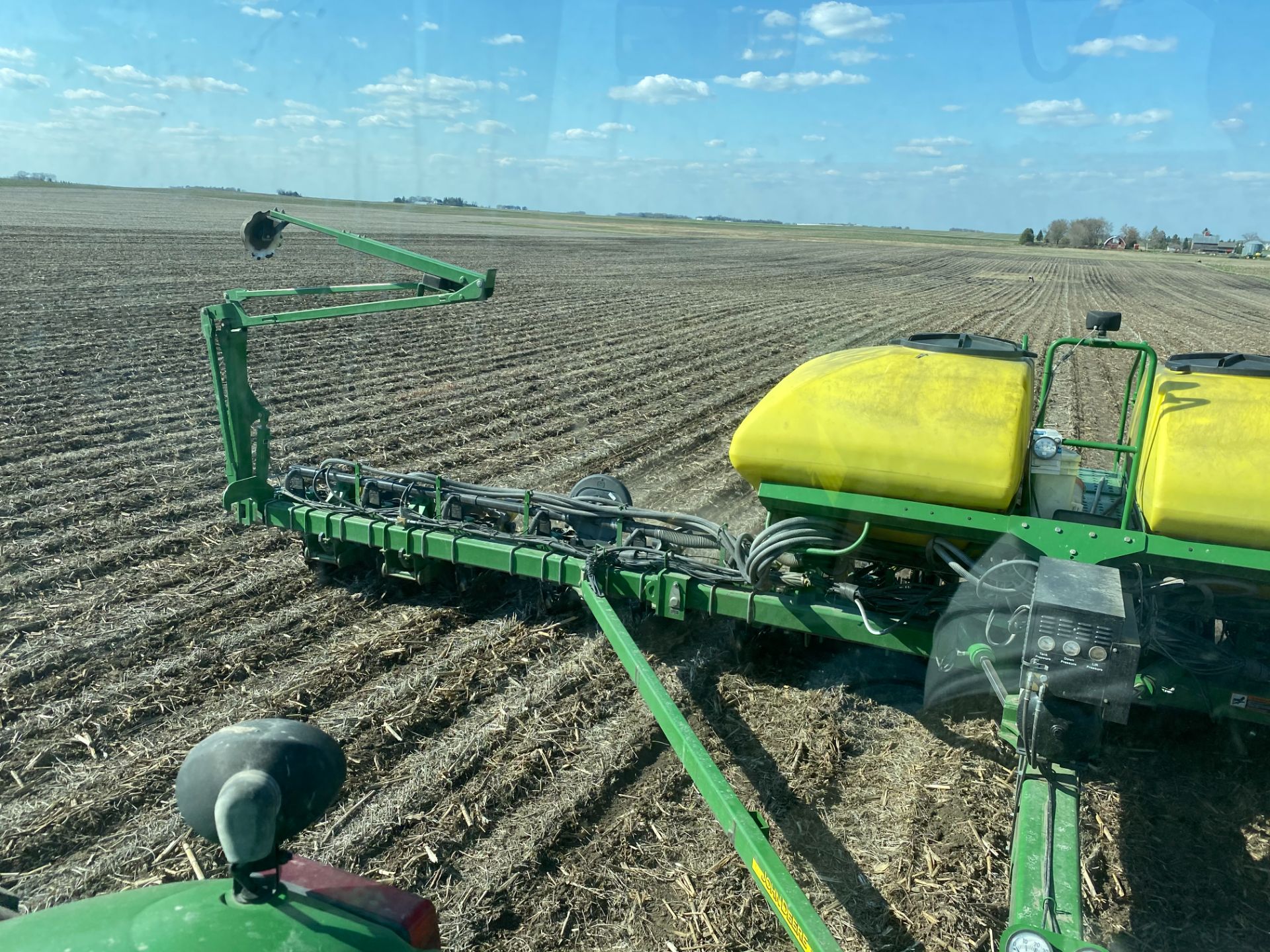Frankly, You Should ‘Give A Ham’
The Wisconsin Pork Association will once again be kicking off the holiday season with the “Give-a-Ham” social media campaign Nov. 1-30.
To launch the season of giving, Wisconsin Pork Association President Christina Meylor will be donating a ham to the Lafayette County Food Pantry in Darlington.
The campaign was originally started by the National Pork Producers Council. It aims to engage the U.S. pork industry and the communities they support in a holiday giving program. The campaign works to broaden awareness of the pork industry’s WeCare® commitment to giving back to its communities.
We Care® is an overarching philosophy and commitment grounded in the six Ethical Principles that guide
America’s pig farmers in all that they do. One of these six principles is “community.” Pork producers affirm their obligation to contribute to a better quality of life in their communities.
During these challenging times, it is important that we try to help alleviate food insecurity in our state while supporting our farmers, says WPA. Many people still struggle to feed their families, so it is fulfilling to help be a part of the solution and to witness such generosity and commitment by so many others doing the same.
The association encourages everyone to participate. To do so, you can follow these instructions:
- Purchase a ham or other pork product.
- Deliver it to your local food pantry.
- Take a photo of your donation.
- Post it to social media using the hashtag #GiveAHam and mention Wisconsin Pork Association.
- Tag a friend and challenge them to do the same!
If you don’t have social media, you can send your pictures to WPA via email to wppa@wppa.org. They will post the picture to their Facebook page. Questions? Email mworek@wppa.org or call 608-723-7551.
UW’s 175th Anniversary Ice Cream Flavor Is…
Pictured: Babcock Hall Dairy Plant fills and packages half-gallon containers of “175 Smore Years” ice cream at UW-Madison. The new flavor celebrates the university’s 175th anniversary. Photo courtesy of UW-Madison.
The voters have spoken: 175 S’more Years will be the commemorative ice cream flavor for the UW’s 175th anniversary celebration.
Babcock Hall Dairy Plant has already begun mixing batches of the rich, chocolate ice cream with a marshmallow swirl and graham cracker crunch. It will be available on campus today and at select local retailers after that.
“With all its educational and research achievements in the past 175 years, the University of Wisconsin has improved the lives of Wisconsinites and people everywhere in big and small ways,” says Charles Hoslet, vice chancellor for university relations at UW-Madison. “What better way to celebrate that than with a generous scoop of 175 S’more Years?”
Voters were asked to choose one of four flavors in an online poll in early October. More than 8,400 votes were cast. The other options were Demi Semi Confetti, Demi-Semi-Sweet-Centennial and Flamingos on the Hill.
Student employees help produce dairy products at the Babcock Hall Dairy Plant. The plant is a laboratory and learning facility for students, university researchers and dairy industry personnel. It reopened this year after renovations of its nearly 29,000 gross square feet.
The Babcock Dairy Plant has produced more than 200 unique ice cream flavors and 20 varieties of cheese since its founding.
July 26, 2023 marked 175 years since Wisconsin’s first governor and legislature created the University of Wisconsin. UW-Madison is honoring these historic moments as part of a year-long celebration. Programming will run through May 2024 and includes annual traditions, such as Homecoming and Founder’s Day, as well as anniversary events that will take the Badger spirit to counties across Wisconsin.
Keeping An Eye On Canada

Edge Dairy Farmer Cooperative said today the Canadian government continues to undermine dairy provisions in the United States-Mexico-Canada Agreement (USMCA), and the co-op urged U.S. officials to reject Canada’s latest proposal for tariff-rate quotas (TRQs).
A dispute settlement panel earlier had found Canada was noncompliant with the USMCA in its use of the quotas for dairy by blocking key export opportunities for U.S. farmers and processors.
In a message to industry today, Canada shared its new proposal, which Edge said remains unfair and U.S. Agriculture Secretary Tom Vilsack said was unacceptable. Among other things, the plan would not allow U.S. exporters to ship directly to the lucrative retail sector ― a major concern for Edge’s members throughout the Midwest.
 |
“We are disappointed to see that Canada has not changed its tune regarding the country’s dairy tariff-rate quotas. Since signing the USMCA, Canada has worked to undermine the spirit of the agreement’s dairy provisions,” said Brody Stapel, president of Edge, the third largest dairy co-op in the U.S.
“Improved access to the country’s dairy market was meant to be beneficial for the U.S. dairy industry and Canadian consumers alike, but instead our northern neighbors continue to put up roadblocks. Edge appreciates Secretary Vilsack’s forceful opposition, and we urge U.S. trade officials to stand firm against Canada’s diversions and hold the country accountable for its commitments,” Stapel said.
Background:
Under USMCA, U.S. dairy producers were granted increased market access to Canada by way of preferential tariff rates for in-quota quantities of certain products. Less than a year after implementation of the agreement in 2020, the Biden administration requested a dispute settlement panel be established to consider Canada’s failure to comply with the dairy TRQ provisions.
The panel determined that Canada’s implementation of the TRQs restricted access of U.S. dairy products by setting aside quotas specifically for Canadian processors. Per the findings of the panel, Canada is required to come into compliance. The country submitted a draft proposal of changes to the U.S. government on Feb. 2 that U.S. dairy producers insisted remained unfair. Canada formally published the proposal today.
Learn To Build Healthy Soil

Wisconsin Women in Conservation is hosting a Climate Smart Soil Solutions education and networking gathering at Kinstone in Fountain City on Friday, May 20 from 1-5pm.
The event is FREE and open to all women farmers, landowners and conservationists. Snacks are included. There will also be an opportunity to test water samples. Registration is required: WiWiC.org
Building healthy soil in an increasingly challenging environment is a high priority for women landowners in Wisconsin. This event will connect women landowners, farmers and conservationists with local conservation professionals, organizations and agencies. The group will delve into climate-smart practices that sequester carbon, reduce greenhouse gas emissions, and mitigate the impacts of climate change, while building resilience to strengthen farm operations and rural properties.
Experts will discuss best practices that will help build soil, increase water storage, and improve aggregate stability and infiltration, and demonstrate what to look for to determine if your soil is healthy, with hands-on soil samples.
Presenters at the event will be Jaime Kraklow and Kristin Foehringer, soil health specialists with USDA’s Natural Resource Conservation Service in Altoona, and Kristine Beck, the founder of Kinstone.
“By working with NRCS and other conservation agencies, women can learn how best to protect the natural resources on their land as well as combat climate change,” says Kraklow. “Practices such as conversion from cropland to rotational grazing, incorporating cover crops and no-till, and improving wildlife habitat – along with many more! – can all work towards mitigating the effects of climate change while rebuilding your resources.”
All women farmers, landowners and conservationists from Pierce, Pepin, Buffalo and surrounding counties are welcome to attend. Time will be allotted for building networks and exploring the grounds.
“I am really looking forward to the event at Kinstone because talking about soil health while sitting in your living room is so different from being in person – seeing the difference, smelling the difference, feeling the difference in your own hands,” says Sara George, farmer and WiWiC Regional Coordinator. “Learning about the health of the soil and how it impacts your land, the food grown and the water we drink is important. I hope women can bring the data they learn during this event back home and they begin implementing soil health practices that will help for many generations.”
Attendees may bring small samples of water from any source (tap water, livestock waterer, pond) and learn how to test for nitrates.
Weather Dominates Conversations
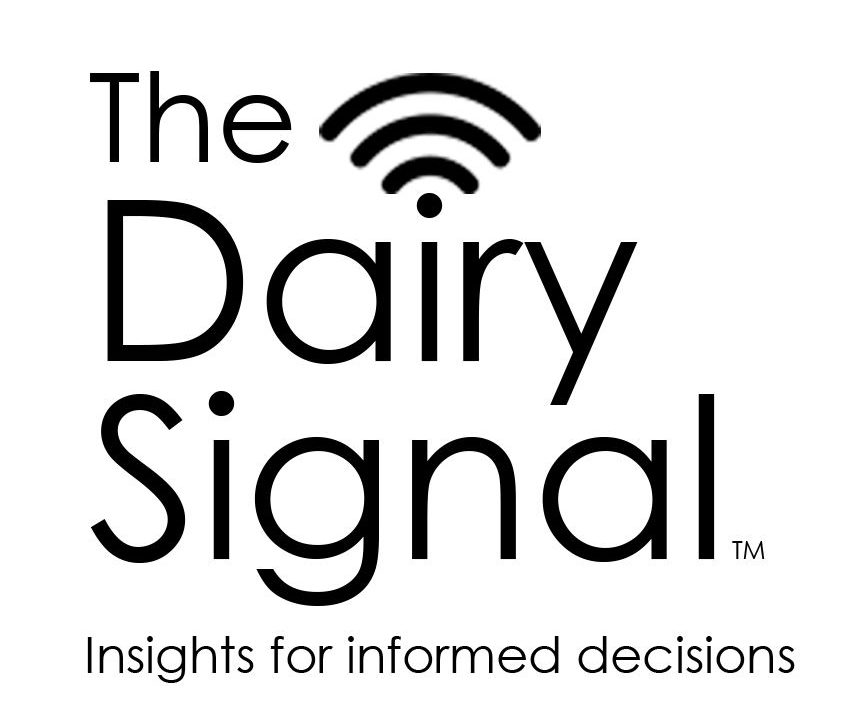
With warmer temperatures and more exposure to the sun just around the corner, next week’s episodes of The Dairy Signal™ from Professional Dairy Producers (PDPW) will highlight strategies to keep people and farms safe, and the impact of heat stress on dairy cow reproduction.
This week’s episodes of The Dairy Signal will cover the following topics:
Tuesday, May 17
Protecting yourself and your team from the sun and heat stress has both short- and long-term health benefits. Learn strategies for working and playing safely in the heat, including sun-protection tips and how to prevent and identify heat stress and heat stroke. Episode presenter will be:
· Leslie Olivares, Education and Outreach Specialist, Western Center for Agricultural Health and Safety, University of California, Davis
Wednesday, May 18
A quick response can save property and lives in case of a fire. Discover important tips to prevent common fire hazards and learn how to respond when equipment or tractors overheat – or when a fire starts in a barn. Episode presenter will be:
· Gerald Minor, Fire Chief, Pittsville Fire Department
Thursday, May 19
Take a closer look into how heat stress impacts dairy cow reproduction, including longer breed-back time, incidence of twins and more. Learn practical strategies to combat these adverse effects during warmer summer months. Episode presenter will be:
· Dr. Paul Fricke, PhD, Dairy Reproduction Specialist at University of Wisconsin-Madison
The Dairy Signal™ is a weekly series of free educational episodes offering insights and resources for fellow dairy farmers and other food system professionals throughout the value chain. Developed by dairy farmers and members of the Professional Dairy Producers® (PDPW) Board of Directors, the episodes air live from 12:00-1:00 PM CT each Tuesday, Wednesday, and Thursday. Live sessions offer attendees the opportunity to engage in open Q&A with the speakers; recorded sessions are available later in the day. All Dairy Signal episodes are accessible through www.pdpw.org.
Wisconsin Farmland Goes Up In Value

There’s a lot to take in from the latest survey of agriculture lenders in the Upper Midwest.
The Seventh Federal Reserve District surveyed 136 agriculture lenders about trends they’re seeing in 2022 and all arrows point to higher farmland values. Overall, farmland values went up 23% compared to a year ago with an escalation of 4% in just the first quarter of 2022. There’s more information to be mined from the survey.
With demand to purchase agricultural land up yet again this year, there was a larger amount of farmland for sale in the three- to six-month period ending with March 2022 than in the same period ending with March 2021. In addition, the number of farms and the amount of acreage sold were up during the winter and early spring of 2022 compared with a year earlier. Given these upward trends, 48 percent of the responding bankers forecasted District farmland values to be higher during the second quarter of 2022, 51 percent forecasted them to be stable, and only 1 percent forecasted them to be lower.
Cash rental rates for District farm acres increased 11 percent from 2021 to 2022. For 2022, average annual cash rents for farmland were up 10 percent in Illinois, 11 percent in Indiana, 12 percent in Iowa, and 8 percent in Wisconsin (not enough survey responses were received from bankers in Michigan to report a numerical change for that state).
Farmland is getting more attention than equipment purchases according to lenders in the survey.
Agricultural credit conditions improved in the District during the first quarter of 2022. Repayment rates for non- real-estate farm loans were higher in the January through March period of 2022 compared with a year ago, and the renewals and extensions of these loans were lower. The availability of funds for agricultural borrowing in the first quarter of 2022 expanded from a year earlier, whereas demand for non-real-estate loans contracted. At 65.0 percent, the average loan-to-deposit ratio in the first quarter of 2022 was at its lowest level since the second quarter of 2013.
Looking ahead to the second quarter of 2022, 48 percent of survey respondents anticipated farmland values to rise, 51 percent anticipated them to be stable, and 1 percent anticipated them to fall. Another Illinois banker stated: “If commodity prices soften and interest rates continue to increase, a decline in real estate values would be anticipated.”
Spring Well Water Review Released
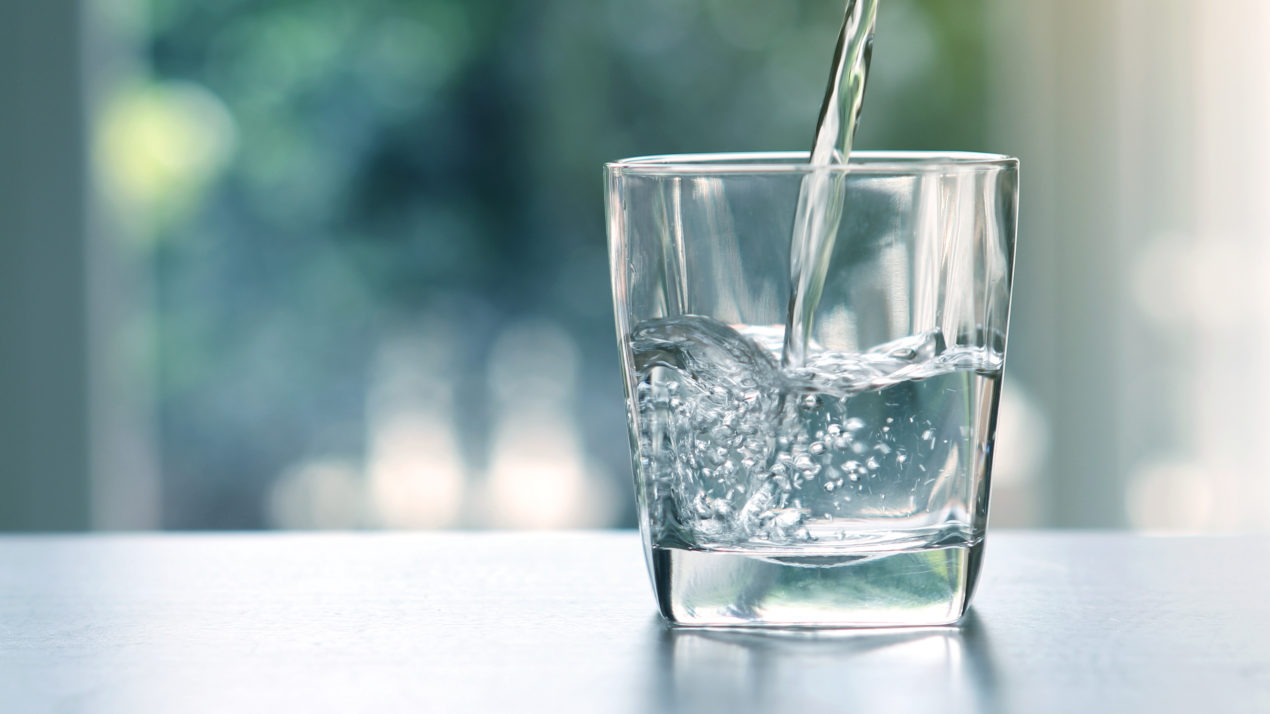
A landmark Wisconsin survey of private wells and groundwater contamination shows that land use and geology near a water well, in addition to how it is constructed, can affect drinking water quality.
The Southwest Wisconsin Groundwater and Geology (SWIGG) study tested 978 samples from 816 private wells (some wells were tested more than once) in Grant, Iowa, and Lafayette Counties, revealing the factors that can influence the groundwater quality of private wells. Results from water samples taken in 2018 and 2019 show that 32% of the private wells sampled tested positive for total coliform bacteria and/or nitrate greater than the Wisconsin and EPA health standard (which is 10 mg nitrate-nitrogen per liter). Additionally, the percentage of study wells with total coliforms or high nitrate was generally greater than statewide averages for private wells.
The study reveals several key factors related to private well water quality:
● Older, shallower wells showed increased levels of contamination.
● Human wastewater contamination was more likely for wells closer to septic systems and for wells with more septic systems nearby.
● Nitrate and total coliform contamination was more likely for wells closer to livestock farms or cultivated land (fields used for crops like corn).
● Local bedrock type also affects risk; nitrate contamination was generally greater where the geology allows rapid flow of water and contaminants.
“The report is valuable at two levels. It provides local, comprehensive, and actionable information to the residents of southwest Wisconsin, and it is a significant advance in groundwater science and our understanding of microbial contamination,” says Joel Stokdyk, the report’s lead author.
The survey had five aims:
- Determining the extent of private well contamination;
- Assessing human wastewater and livestock manure contamination;
- Testing for pathogens in private wells;
- Identifying factors related to how contaminants move to and through the groundwater or enter wells; and
- Identifying factors related to potential contamination sources, such as septic systems, livestock, and cultivated land.
Private wells are the primary water source for all rural residents of southwest Wisconsin. There are approximately 16,000 construction records for private wells in the three-county region and there are additional wells for which construction records are unavailable. Federal, state, or local governments do not regularly monitor water quality for private wells, so homeowners are responsible for the maintenance and testing of their own well. Homeowners can contact their local health department or county Extension office for more information about private well water testing options.
Bacteria in groundwater can originate from fecal sources, like manure and wastewater from septic systems, and non-fecal sources. Nitrate can originate from fecal sources, fertilizers, and natural sources. Bacteria and nitrate are carried to groundwater by rain and melting snow. Well defects can contribute to contamination, but even properly constructed wells can be subject to contamination when groundwater is contaminated from sources on the landscape.
Tests that distinguish between human wastewater, cattle manure, and pig manure were used to identify fecal sources of contamination. For these tests, 138 wells were randomly selected from those that already tested positive for total coliforms or with high nitrate. Human wastewater was detected in 64 wells, cattle manure was detected in 33 wells, and pig manure was detected in 13 wells, indicating that both human wastewater and livestock manure contribute to private well contamination. These tests cannot determine the source of contamination for nitrate, total coliforms, and E. coli, which can originate from many places.
This study provides major pieces of data for the understanding of the relation of land use and geology to private wells and drinking water quality. It is one of the largest and most comprehensive private well studies in the nation.
“We are very grateful to the private well owners, research team, partners, and funders of this study, who have all made it possible for us to better understand, and ultimately better protect, rural drinking water quality,” said Iowa County Conservationist Katie Abbott. “We’ll have many more discussions at community, county, regional, and state levels to look for feasible solutions based on this data. In the meantime, we strongly encourage well owners to test their water at least annually and to learn more about well maintenance.”
Funding for the survey was provided by Grant, Iowa, and Lafayette Counties, with additional funding from the Lafayette Ag Stewardship Alliance, USDA-ARS, residents of Lafayette County, Wisconsin Department of Natural Resources, U.S. Geological Survey, and Iowa County Uplands Watershed Group in addition to collaboration with researchers from UW-Madison Extension and the Wisconsin Geological and Natural History Survey.
The full report is available at https://iowa.extension.wisc.edu/natural-resources/swigg
Progress – But We’re Still Lagging
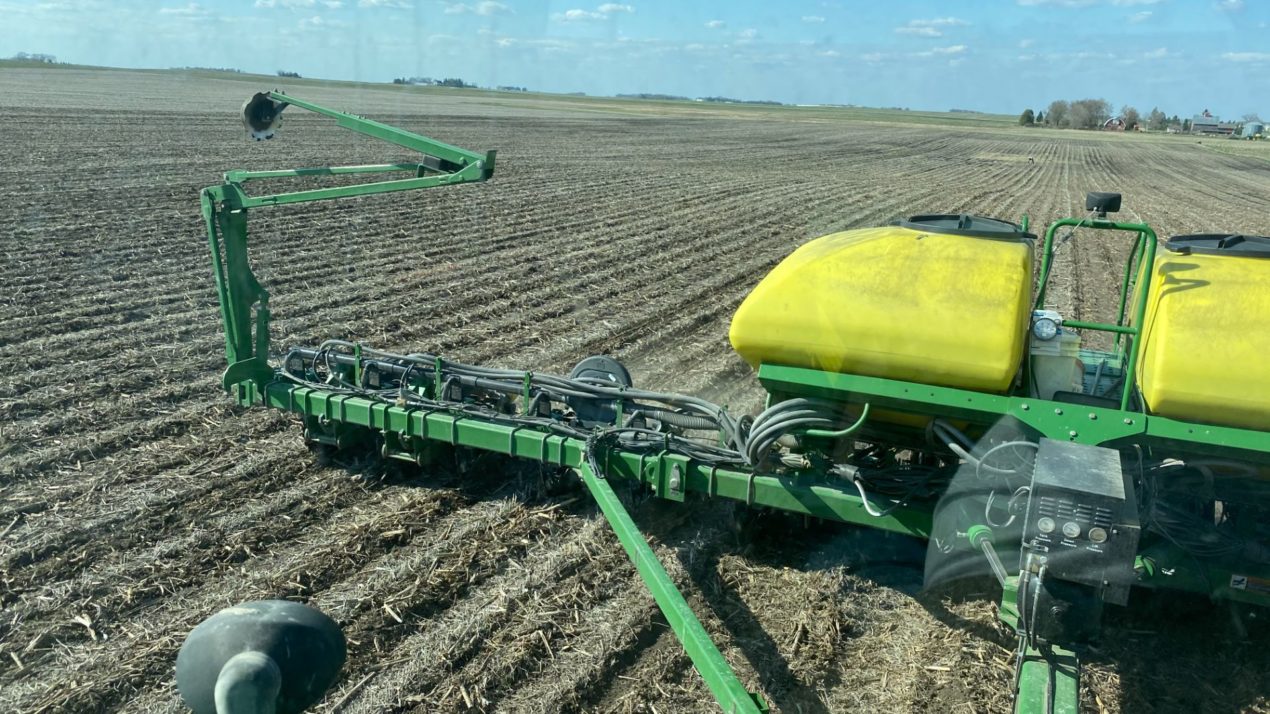
Many farmers in southern Wisconsin said they’ve never seen SO MANY acres go in, in such little time! That’s what happens when warm, dry weather combine with anxious farmers!
The latest update from the Wisconsin Ag Statistical Service shows 7 days worth of real progress in most of the state. Still, there’s work to be done.
Spring tillage was reported as 57 percent complete, over 2 weeks behind last year and 5 days behind the 5-year average.
Corn planting was 34 percent complete, 10 days behind last year and 5 days behind the average. Three percent of corn had emerged, 9 days behind last year and 6 days behind the average.
Soybean planting was 26 percent complete, 9 days behind last year and 2 days behind the average. Soybeans emerged was 1 percent, 12 days behind last year and 8 days behind the average.
Oats planted was reported as 54 percent complete, over 2 weeks behind last year and 1 week behind the average. Twenty percent of oats had emerged, over 2 weeks behind last year and 11 days behind the average.
Potato planting was reported as 69 percent complete, 9 days behind last year and 1 day behind the average.
Winter wheat condition was rated 79 percent good to excellent statewide, up 1 percentage point from last week.
All hay condition was reported 70 percent good to excellent condition, up 10 percentage points from last week. Winter freeze damage to alfalfa was rated 2 percent moderate and 10 percent light.
Pasture condition was rated 57 percent good to excellent, up 9 percentage points from last week.
Dunn And Marinette Find HPAI
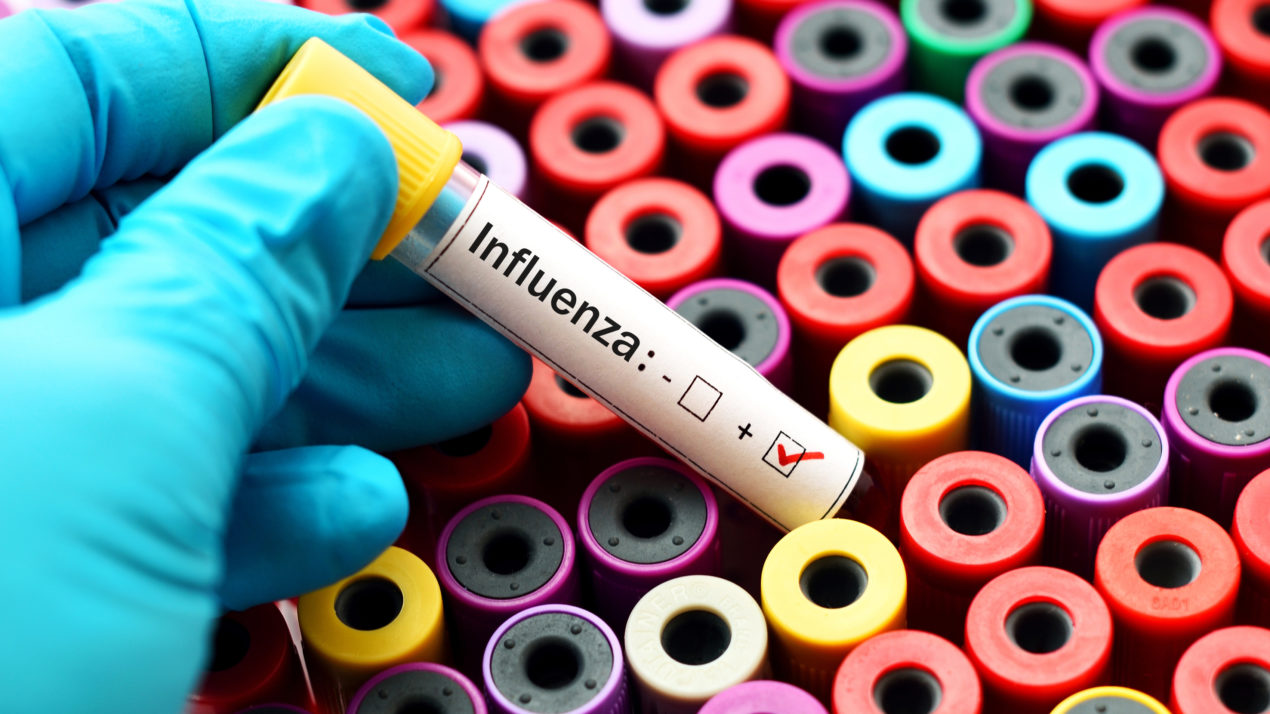
The Wisconsin Department of Agriculture, Trade and Consumer Protection (DATCP) has identified cases of highly pathogenic avian influenza (HPAI) in backyard flocks in Dunn and Marinette counties. Birds at both sites will be depopulated to prevent spread of the disease.
Domestic flocks in 13 Wisconsin counties have now been infected with HPAI. Flock owners are strongly encouraged to continue practicing biosecurity measures to protect their birds from the virus. This includes washing hands, disinfecting equipment, restricting access to birds, and separating new birds from existing flocks for at least 30 days. Poultry owners are asked, when possible, to keep their birds indoors.
Additionally, DATCP has issued a summary special order restricting movement of domestic birds and domestic bird products in parts of Barron and Polk counties. Flock owners who want confirm whether they are in a restricted zone can check the county map or listing of Public Land Survey System (PLSS) township and range sections on the DATCP website. Anyone who would like to check the PLSS section of their current or desired flock location may do so at https://maps.sco.wisc.edu/plss-locator.
Wisconsin poultry owners are reminded to register their premises. State law requires that all livestock owners register where their animals are kept, and registration helps animal health officials communicate with flock owners during disease outbreaks.
To report increased mortality or signs of illness among domestic birds, contact DATCP at (608) 224-4872 (business hours) or (800) 943-0003 (after hours and weekends).
Cherry Election Open
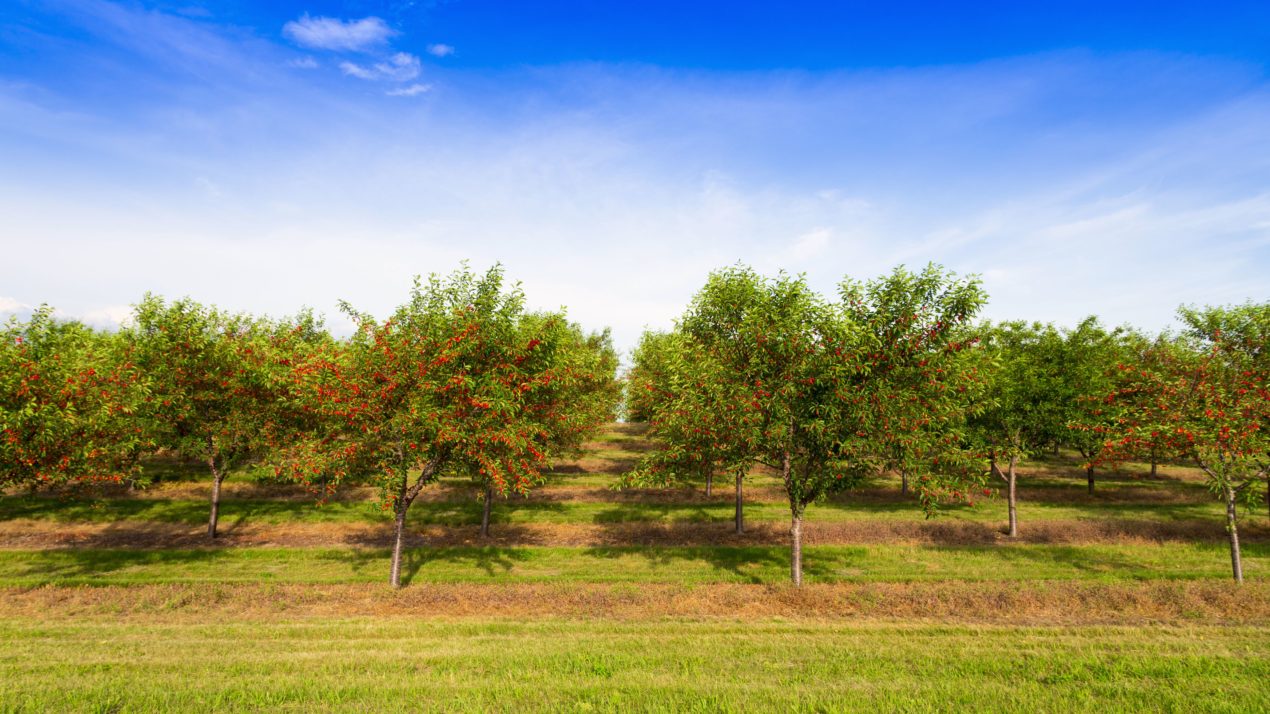
DATCP has certified two nominees that are eligible to be elected to the Wisconsin Cherry Board. Candidates were nominated during the period that ended April 1. Wisconsin tart cherry growers have until June 15 to vote on the following candidates:
- Chris Lautenbach, Fish Creek
- Jim Seaquist, Ellison Bay
DATCP will mail ballots to eligible cherry growers this week. Growers who have not received a ballot by May 20 can request one by contacting Debbie Gegare, DATCP Market Orders Program Coordinator, at 608-224-5116 or [email protected]. Eligible growers can vote for the nominated growers or write in other eligible producers. Ballots must be emailed or postmarked by June 15.
Elected producers will serve three-year terms beginning July 1 and ending June 30, 2025.

